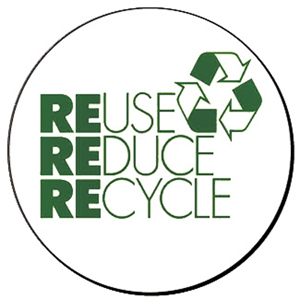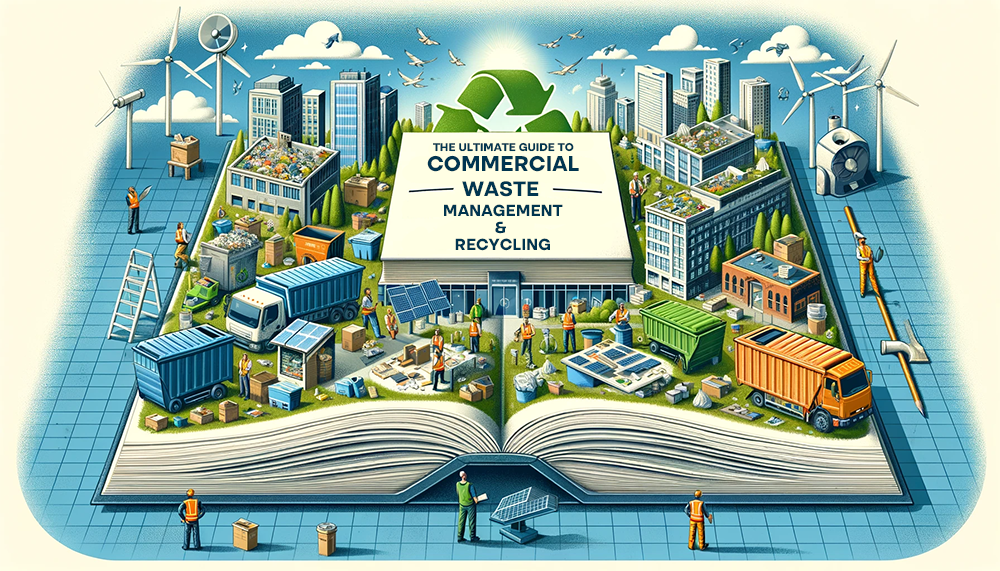Recycling Lives Services: A Full Option for Business Recycling
Recycling Lives Services: A Full Option for Business Recycling
Blog Article
Exploring Different Types of Waste in Modern Waste Administration Solution
The modern landscape of waste management includes navigating a complicated variety of waste kinds, each needing specialized handling and disposal methods to reduce environmental effects. Local strong waste, contaminated materials, digital waste, and natural waste each existing distinctive obstacles and opportunities for source recuperation. Cutting-edge solutions such as smart waste containers and waste-to-energy technologies are becoming essential tools in improving efficiency and sustainability. Understanding these waste types is essential for promoting public understanding and encouraging active participation in lasting techniques. What approaches can successfully attend to these different kinds of waste while promoting a round economic situation?
Local Strong Waste
Metropolitan strong waste, often described as home trash or rubbish, includes a selection of disposed of materials created by property, commercial, and institutional resources within a town. This waste stream typically consists of items such as product packaging, food scraps, yard trimmings, paper, plastics, fabrics, and disposed of house products. The management of local solid waste is an essential element of city planning and public wellness, necessitating reliable collection, transportation, and disposal systems.
Efficient waste monitoring systems are developed to decrease environmental influence while maximizing resource recuperation. This typically involves a mix of approaches including landfilling, composting, and recycling. Recycling programs target products like paper, glass, steels, and particular plastics, diverting them from landfills and reintroducing them right into the manufacturing cycle. Composting organic waste, such as food scraps and yard trimmings, not only lowers landfill usage however additionally generates important soil modifications.
Municipalities must also address the economic and logistical challenges related to waste monitoring. Implementing pay-as-you-throw systems, improving public recognition, and buying innovation can dramatically boost waste diversion prices. By incorporating these methods, towns can promote sustainable communities, reduce greenhouse gas exhausts, and preserve natural deposits.
Hazardous Waste

Effective dangerous waste management involves numerous crucial steps: recognition, segregation, disposal, and treatment. Segregation guarantees that dangerous materials are saved independently from non-hazardous waste to prevent cross-contamination.
Regulative frameworks, such as the Resource Preservation and Recovery Act (RCRA) in the United States, provide guidelines and standards for contaminated materials administration. Adherence to these policies, combined with advancements in waste treatment innovations, is necessary in minimizing the dangers connected with contaminated materials.
Electronic Waste
Electronic waste, typically referred to as e-waste, stands for a rapidly expanding difficulty in waste management systems globally. This sort of waste includes discarded digital devices and tools such as mobile phones, computers, tvs, and other digital devices. The rapid rate of technological development, coupled with reducing product life-spans and consumer need for the most up to date gadgets, has significantly raised the quantity of e-waste produced yearly.
E-waste is especially bothersome because of its complicated structure, typically containing dangerous materials like lead, cadmium, and mercury, which present significant environmental and health and wellness threats if not correctly taken care of. Alternatively, e-waste also consists of beneficial materials such as gold, copper, and silver, which can be recouped and reused. The twin nature of e-waste-- both beneficial and unsafe-- necessitates specialized handling, recycling, and disposal processes.
Efficient Full Report e-waste monitoring involves strict regulatory frameworks, robust collection systems, and advanced reusing technologies. Public recognition and participation are critical, as improper disposal practices, such as illegal disposing and casual recycling, exacerbate environmental contamination and health risks. As a result, improving e-waste management practices is important for reducing ecological impact and recovering valuable sources in an increasingly digital globe.

Organic Waste
Organic waste, making up cooking area scraps, lawn trimmings, and farming residues, stands for a considerable portion of the international waste stream. This type of waste is naturally degradable, implying it can be damaged down by microorganisms right into simpler organic substances. Despite its capacity for natural decay, inappropriate management of natural waste can result in damaging ecological impacts, including the exhaust of greenhouse gases such as methane, which add to climate modification.
Effective administration of natural waste is essential for lessening these ecological Find Out More impacts (recycling lives services). Composting is a commonly taken on method, transforming natural waste right into nutrient-rich garden compost that can improve soil wellness and agricultural performance. In addition, anaerobic food digestion is an emerging innovation that transforms natural waste right into biogas, a renewable resource resource, and digestate, which can be made use of as plant food
Municipalities and waste management entities must apply robust organic waste collection and therapy programs to take full advantage of the benefits of these procedures. Public education and learning projects can additionally play a pivotal role in encouraging households and companies to separate natural waste from other kinds of waste. By focusing on the management of organic waste, societies can minimize land fill usage, reduced greenhouse gas discharges, and produce beneficial results for farming usage.

Innovative Waste Management
In the realm of waste management, innovative methodologies are changing exactly how societies handle their refuse, intending for sustainability and performance. One popular development is the implementation of clever waste containers equipped with sensing units that check fill levels and optimize collection courses.
One more notable growth is the adoption of waste-to-energy (WtE) technologies. By transforming non-recyclable waste into usable energy through procedures such as incineration and anaerobic digestion, WtE reduces land fill problem and supplies a renewable resource source. Furthermore, advancements in chemical recycling enable the break down of intricate plastics into their initial monomers, allowing the development of brand-new, top notch plastic products.
Furthermore, the round economic situation design is gaining traction, stressing the design of products and systems that prioritize reusability and source effectiveness. This all natural approach motivates sectors to decrease waste generation visit this web-site from the beginning. Via these innovative techniques, modern-day waste monitoring systems are not just dealing with the prompt obstacles of waste disposal however likewise paving the means for a more sustainable future.
Final Thought
A detailed understanding of metropolitan strong waste, contaminated materials, electronic waste, and organic waste, combined with the application of cutting-edge waste administration solutions, is vital for mitigating ecological impacts. Incorporating modern technologies such as smart waste bins and waste-to-energy systems can enhance efficiency and sustainability. Reliable waste management techniques not only foster resource recovery but likewise promote public awareness and participation, ultimately adding to the development of a circular economic situation.
The contemporary landscape of waste management entails browsing an intricate variety of waste types, each calling for specialized handling and disposal approaches to minimize ecological effects. Community solid waste, hazardous waste, digital waste, and natural waste each present distinct obstacles and possibilities for source healing.Electronic waste, generally referred to as e-waste, stands for a rapidly growing obstacle in waste monitoring systems internationally. With these innovative methods, modern-day waste monitoring systems are not only dealing with the prompt obstacles of waste disposal however likewise paving the method for a more lasting future.
A detailed understanding of metropolitan strong waste, dangerous waste, electronic waste, and natural waste, coupled with the execution of ingenious waste administration solutions, is important for mitigating ecological impacts. (recycling lives services)
Report this page